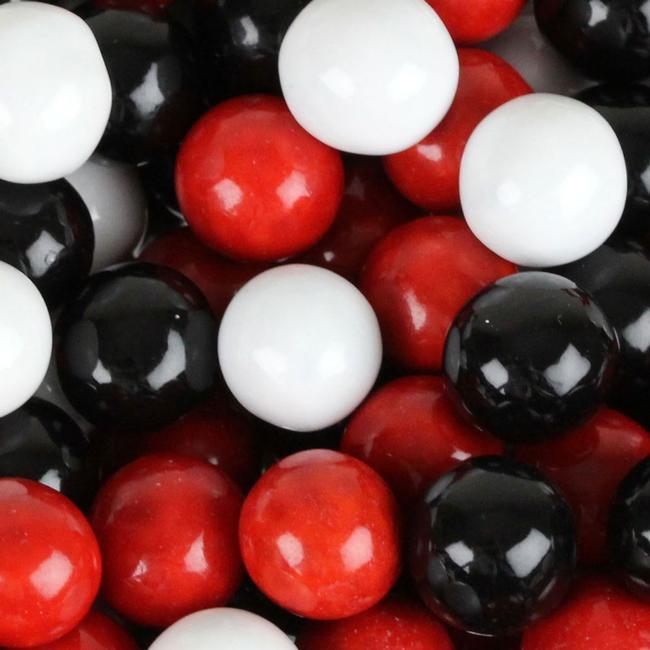A Difficult Choice!

A box contains 4 balls. The color of each of the balls is one of the three: White, Black or Red. However, you don't know how many balls of each color are there. It might even be the case that all the balls are of the same color. You then draw two balls randomly from the box. The probability that both the drawn balls are red can be written as q p , where p and q are coprime positive integers . What is the value of p + q ?
The answer is 10.
This section requires Javascript.
You are seeing this because something didn't load right. We suggest you, (a) try
refreshing the page, (b) enabling javascript if it is disabled on your browser and,
finally, (c)
loading the
non-javascript version of this page
. We're sorry about the hassle.
3 solutions
Since each ball can be of any of the three colors, there are total 3 × 3 × 3 × 3 = 8 1 possible combinations. The total number of combinations with at least two red balls can be calculated as given below.
The total number of combinations with exactly two red balls N ( 2 ) can be calculated as this. The two balls out of four (which are to be colored red) can be chosen in 4 C 2 ways. Then each of the remaining two balls can have two possible colors : Black or White. Thus, N ( 2 ) = 4 C 2 × 2 × 2 = 2 4 .
Similarly, we have,
N ( 3 ) = 8 and N ( 4 ) = 1 .
Suppose that the given combination contains n r red balls with n r > 1 . Then the probability that from this combination the first drawn ball comes out red is 4 n r and then the box contains 3 balls with n r − 1 red balls. Thus, the probability that the second drawn ball is also red is: 4 n r × 3 n r − 1 . Combining all these, the total probability that two red balls are drawn from the original box is:
P ( two reds ) = 8 1 2 4 × 4 2 × 3 1 + 8 1 8 × 4 3 × 3 2 + 8 1 1 = 9 1 .
Hence, p + q = 1 + 9 = 1 0
Are the balls identical or distinct ?????
if distinct then N(2) =24 as you calculated
but if it is identical then N(2) =3
RRWB RRWW RRBB
Log in to reply
Can you please elaborate this?
@Snehal Shekatkar I agree with Kushal, I think this solution is incorrect. RRWB RRWW RRBB are the only 3 combinations with 2 reds. N(2) =24 assumes that a different order of the same colours is a different set of balls (ie. that two balls of one color are distinct form one another). When generating a bag of balls RRWB is the same as RRBW and should not be treated as two different combinations.
This also applies to the total number of combinations. 81 is not the number of combinations, but rather the total number of ways in which we can draw 4 balls from a bag of three different colored marbles
My answer turned out to be 7 so enlighten me:
Calculation of sample space :
Let there be x reds, y whites and z blacks so x+y+z=4 => ( 2 6 ) ( 2 4 ) Ways of choosing 2 balls.
Favorable Cases:
| All red | 3 Red | 2 Red |
| ( 2 4 ) | 2 ( 2 3 ) | 3 ( 2 2 ) |
Where the 3 ways of 2 Red are : The other 2 can be i) Both Black ii)Both White ii)1 of each
this gives total of 15 cases out of a total possible 90 cases i.e probability is 6 1
Your solution assumes that each of the ways of assigning k reds (0<=k<=4) (resp. whites and blacks) is equally likely. In other words, you assume that these 15 groups of elementary cases are equally likely:
| 0, 0, 4 | (1 case) |
| 0, 1, 3 | (4 cases) |
| 1, 0, 3 | (4 cases) |
| 0, 2, 2 | (6 cases) |
| 1, 1, 2 | (12 cases) |
| 2, 0, 2 | (6 cases) |
| 0, 3, 1 | (4 cases) |
| 1, 2, 1 | (12 cases) |
| 2, 1, 1 | (12 cases) |
| 3, 0, 1 | (4 cases) |
| 0, 4, 0 | (1 case) |
| 1, 3, 0 | (4 cases) |
| 2, 2, 0 | (6 cases) |
| 3, 1, 0 | (4 cases) |
| 4, 0, 0 | (1 case) |
The other solutions assume the coloring of each ball is independent, making 81 cases total.
I solved it a bit differently.
This problem assumes that each of the four balls was sort of "magically generated"... i.e. Each has a 1/3 probability of being each of the 3 colors.
So, the fact that the first two were in the container is immaterial, and each has a 1/3 probability of being right.
Therefore the probability they are both red is 3 1 × 3 1 = 9 1
1 + 9 = 1 0